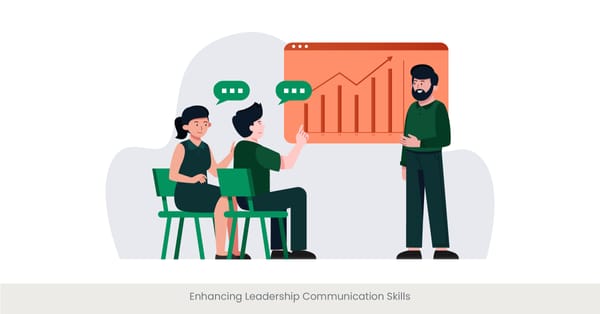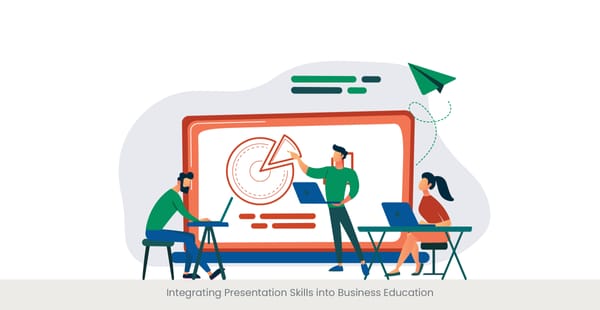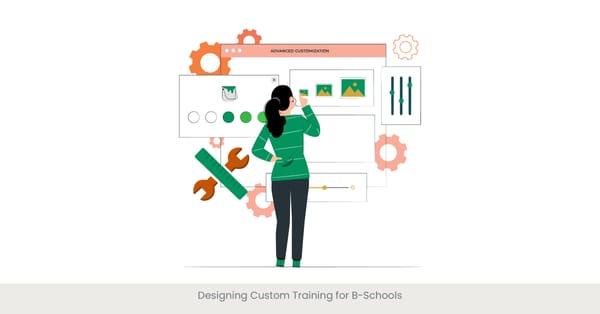
Assessing Organizational Communication Challenges and Goals
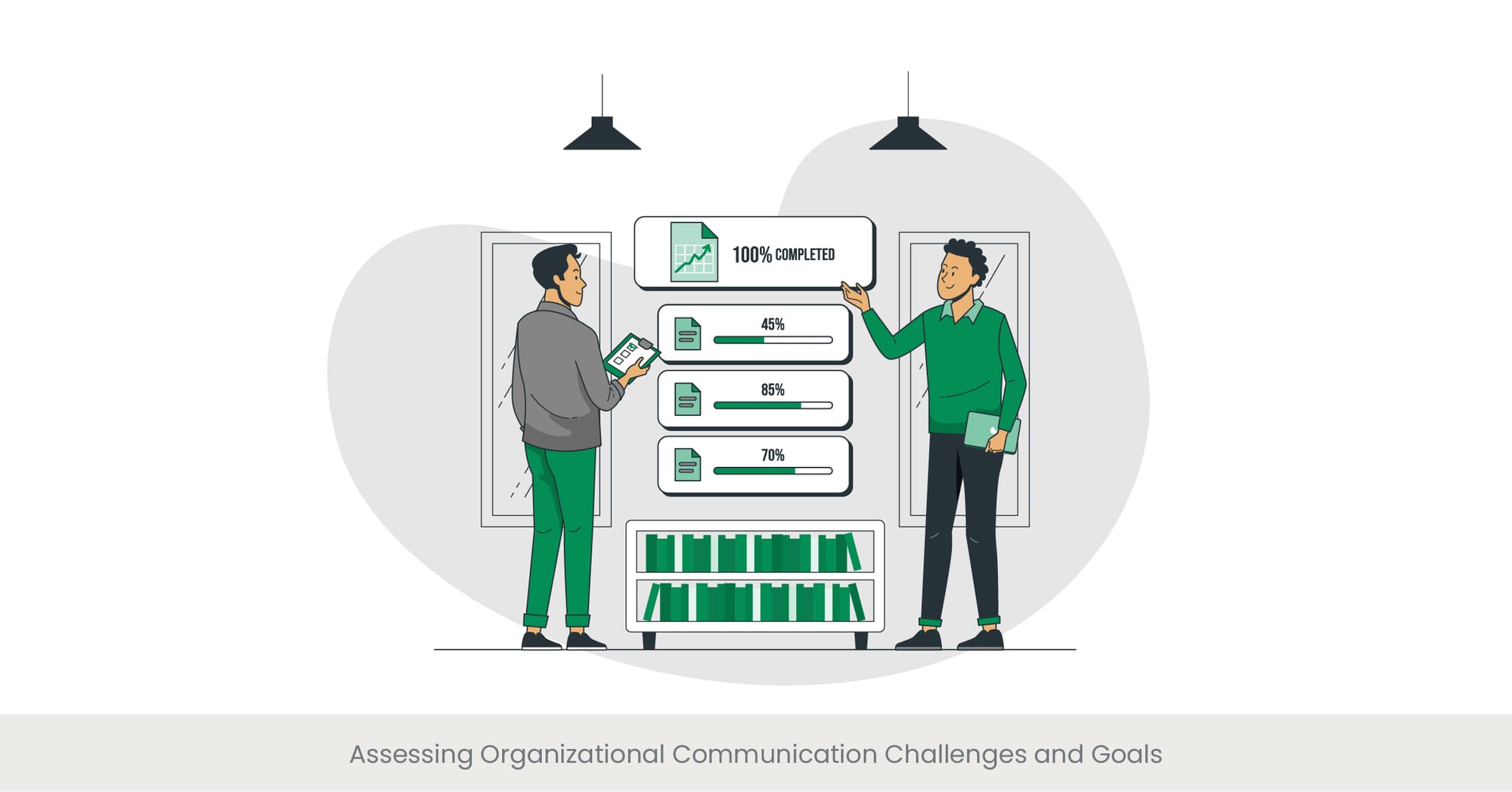
Introduction: Identifying Communication Barriers and Objectives
Effective communication is the cornerstone of any successful organization. The initial step in enhancing business communication through customized workshops involves a thorough assessment of existing communication challenges and defining clear, actionable goals. This process helps in pinpointing specific areas where communication breakdowns occur and establishes a framework for addressing these issues systematically.
Background: The Importance of a Diagnostic Approach
Organizations often face diverse communication challenges, ranging from misalignments in internal messaging to ineffective engagement with external stakeholders. A diagnostic approach to assessing these challenges involves both quantitative and qualitative analyses, such as surveys, interviews, and communication audits. This comprehensive evaluation helps in understanding the gaps between current practices and the optimal communication environment.
Real-World Applications: Tailoring Solutions to Unique Needs
For example, a multinational corporation identified a significant disconnect in how its various departments shared information affecting productivity. By conducting targeted workshops focused on cross-departmental communication, they were able to establish more effective communication protocols and improve overall operational efficiency. Such practical applications underscore the value of customized training that addresses specific organizational needs.
References and Validation
Studies, such as those published in the Harvard Business Review, emphasize that organizations with strong communication practices are up to 3.5 times more likely to outperform their peers. A report by Ink PPT Communication Workshops highlights how tailored communication training programs have led clients to a 25% improvement in employee engagement and productivity metrics within just one quarter.
Tailoring Workshop Content to Address Specific Business Needs
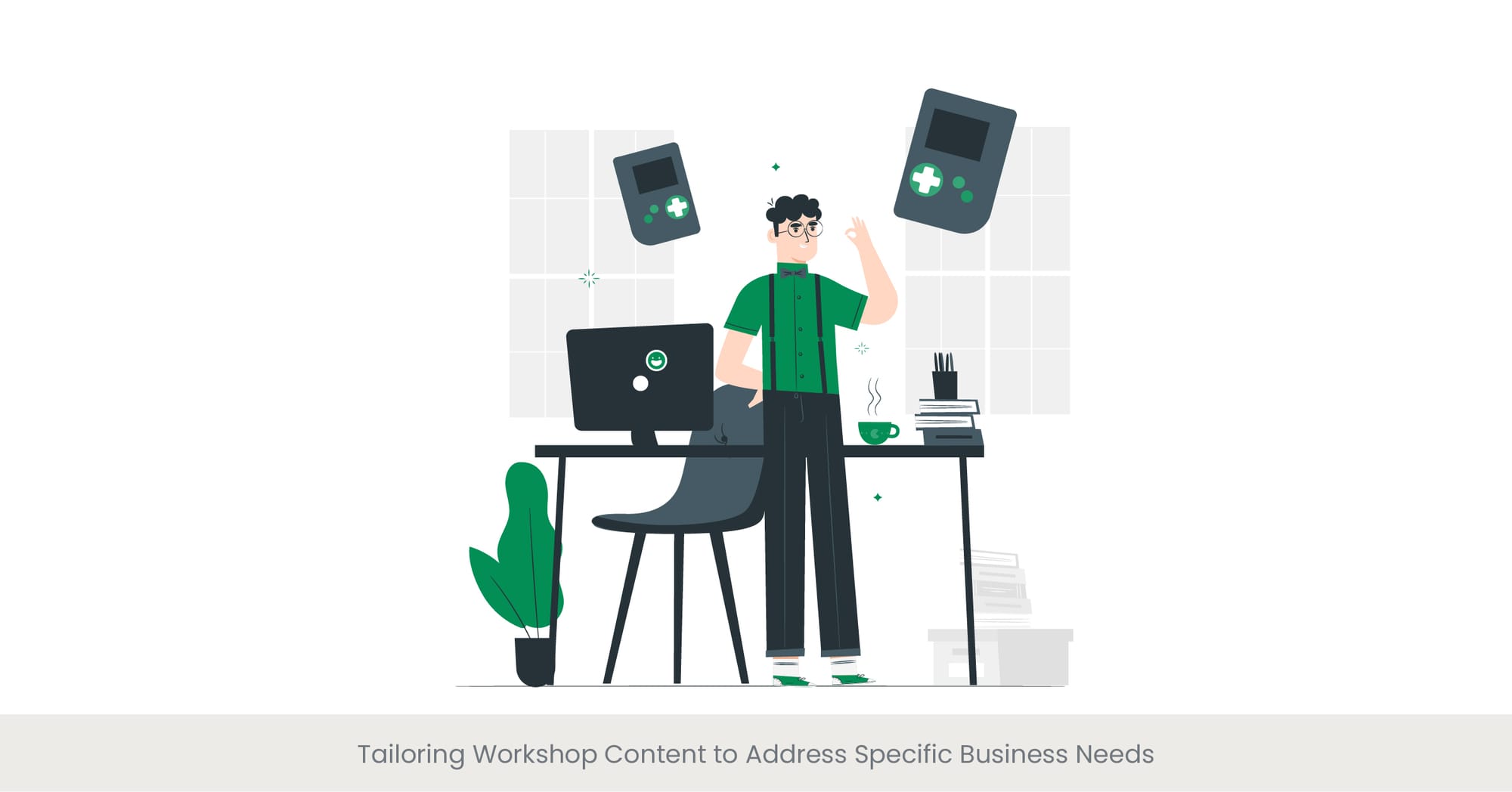
Introduction: Customizing Content for Maximum Impact
In the realm of corporate training, one size does not fit all. Customizing workshop content to meet the specific needs of a business is crucial for ensuring the relevance and effectiveness of the training. Tailored content addresses the unique challenges and goals of an organization, making the learning experience both impactful and applicable.
Background: The Strategy Behind Content Customization
Customizing workshop content begins with a deep understanding of the business’s strategic objectives, workforce dynamics, and industry-specific challenges. This approach involves stakeholders in the planning process to align the training content with business goals and employee needs. The customization can range from developing unique case studies to incorporating company-specific data in training materials.
Real-World Applications: Successful Implementation Examples
For instance, a tech company facing challenges with project communication among global teams implemented a series program of customized workshops focusing on cross-cultural communication and remote teamwork. The content was designed around the company's specific project management tools and communication platforms, which helped in significantly reducing project delays and misunderstandings.
References and Validation
According to a study by the Association for Talent Development, customized training programs for crisis communications are 50% more effective than generic programs. Further, feedback from participants in executive presentation skills development sessions customized for a leading financial services firm showed a 40% improvement in their ability to communicate key, corporate communications messages effectively, as documented in a recent corporate communication training review.
Designing Interactive Exercises and Role-Playing Scenarios

Introduction: Engaging Through Interactivity
Interactive exercises and role-playing scenarios are essential components of effective communication workshops. They provide participants with hands-on experience in handling real-life communication challenges within a controlled environment. This active participation helps reinforce learning and improves the retention of communication strategies.
Background: The Value of Interactive Learning
The shift towards interactive learning stems from educational theories that emphasize experiential learning. Role-playing and simulations allow participants to experience the emotional and practical aspects of business communication, which can include negotiation, conflict resolution, leadership, and persuasive speaking. These methods help identify personal communication styles and areas for improvement.
Real-World Applications: Practical Deployment in Workshops
Consider a scenario in a workshop for a sales team where participants engage in role-playing exercises designed to handle difficult customer interactions. These exercises are tailored to reflect typical scenarios they might face, such as negotiating with a hesitant buyer or managing a customer complaint. Feedback is provided in real time, allowing participants to learn and adjust their strategies immediately.
References and Validation
Research published online in the Journal of Applied Psychology demonstrates that participants in interactive training sessions exhibit a 75% greater improvement in communication skills compared to those in lecture-based sessions. Furthermore, companies like INK PPT Communication Workshops have reported significant success in their tailored role-playing modules, noting improved employee confidence and effectiveness in customer engagements.
Facilitating Team Building and Collaboration Through Communication

Introduction: Strengthening Teams with Communication
Effective communication is a fundamental element in building cohesive teams and fostering collaboration within organizations. By developing and facilitating communication-focused team building exercises, workshops can significantly enhance the interpersonal relationships and collaborative spirit among team members.
Background: The Importance of Communication in Team Dynamics
The dynamics of a team are profoundly influenced by how well its members can communicate their ideas, challenges, and feedback. Poor communication can lead to misunderstandings, reduced efficiency, and of course, weakened morale. Conversely, strong communication channels enhance mutual understanding, align efforts towards common goals, and boost overall productivity.
Real-World Applications: Implementing Communication-Driven Team Building
A practical application can be seen in workshops that use activities like "problem-solving" scenarios where teams must communicate effectively to navigate challenges. For example, a multinational corporation implemented communication workshops that included activities designed to improve listening advanced presentation skills, empathy, and the ability to articulate thoughts clearly. These activities not only improved project outcomes but also enhanced team cohesion and support across departments.
References and Validation
Studies from the Harvard Business Review highlight that teams with effective communication practices are up to 25% more productive than those without. Additionally, feedback from corporate communication training sessions focused on team building, such as those conducted by Executive Presentation Skills Development programs, has shown a 30% increase in team collaboration and satisfaction post-workshop.
Incorporating Feedback Loops and Continuous Improvement Practices
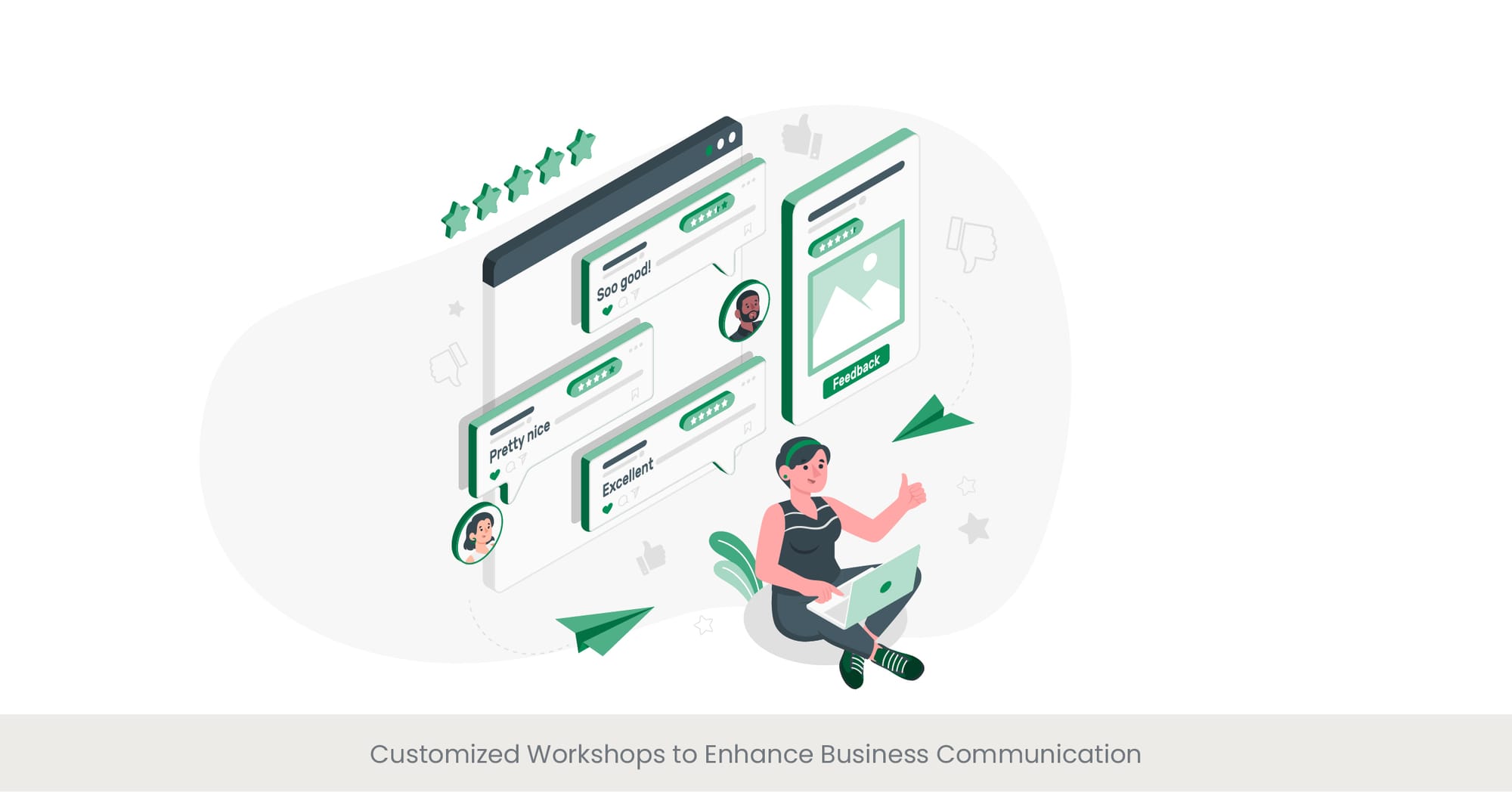
Introduction: Enhancing Communication through Feedback
Feedback loops are essential for continuous improvement in business communication. By systematically incorporating feedback into communication workshops, organizations can create a culture of ongoing learning and adaptation, which is crucial for maintaining the effectiveness of communication strategies over time.
Background: The Role of Feedback in Learning and Development
Feedback loops involve collecting and analyzing responses from communication interactions to identify successes and areas for improvement. This iterative process not only helps individuals and teams refine their communication knowledge and skills but also supports organizational change by aligning communication practices with evolving business needs.
Real-World Applications: Effective Feedback Mechanisms
In practice, feedback loops can be implemented through various mechanisms such as post-training surveys, peer reviews, and real-time digital feedback tools. For instance, a tech company introduced a feedback app that allowed team members to provide immediate feedback after meetings and presentations. This tool helped pinpoint areas where communicators excelled and where they needed additional training, leading to targeted improvements and enhanced overall communication efficiency.
References and Validation
According to a study published in the Journal of Business Communication, organizations that integrate feedback mechanisms into their communication training programs see an average performance improvement of 40% in communication effectiveness. Moreover, examples from corporate communication training programs, like those offered by Ink PPT Communication Workshops, show that continuous feedback not only improves individual skills but also boosts team performance and morale.
Providing Tools and Resources for Effective Business Communication
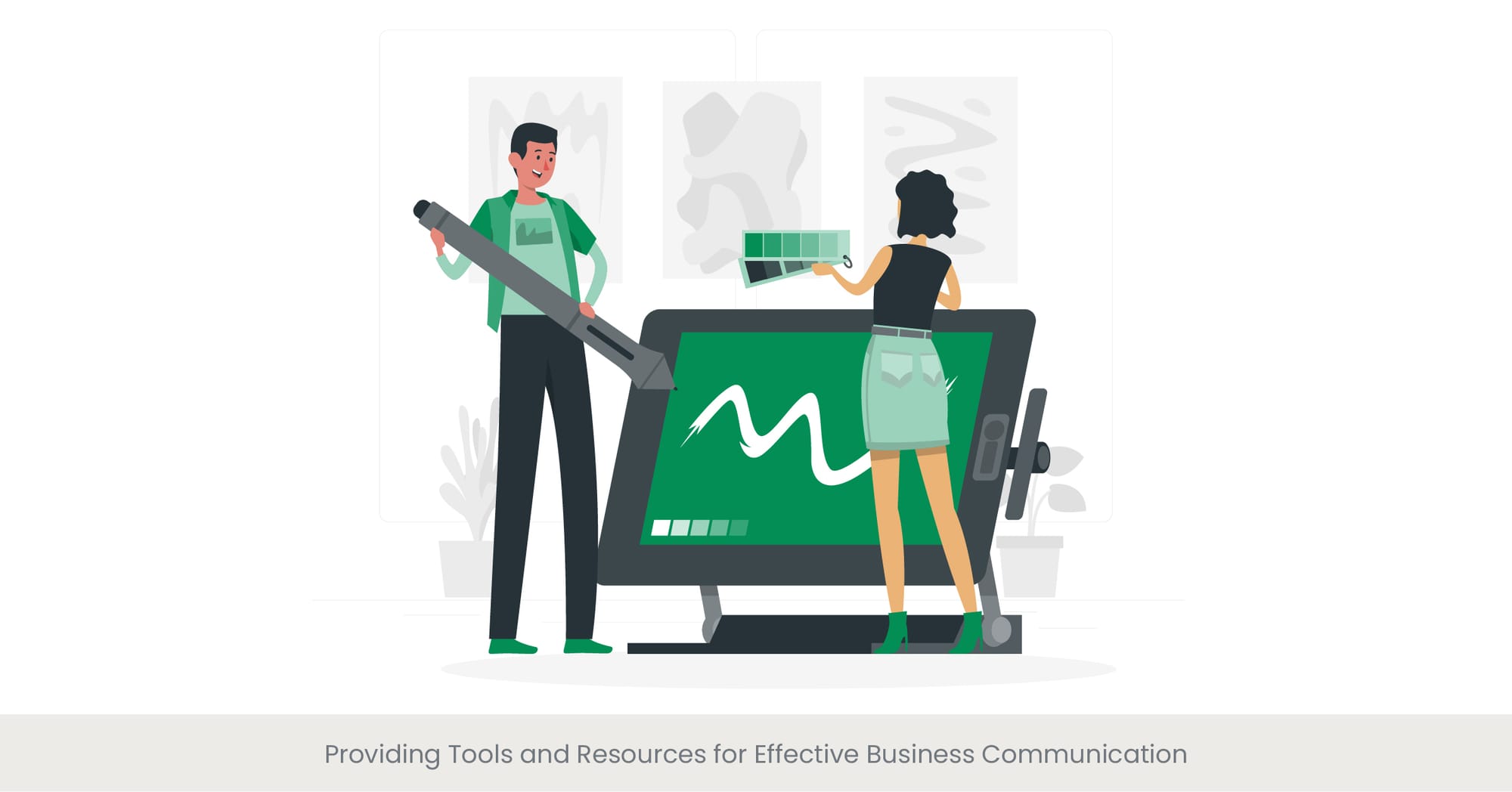
Introduction: Equipping Teams with Essential Communication Tools
In today’s fast-paced business environment, providing teams with the right tools and human resources, is essential for effective communication. Workshops that equip participants with practical tools can significantly enhance their ability to convey messages clearly and effectively, both internally and externally.
Background: The Necessity of Communication Tools in Modern Business
Communication tools range from digital platforms like email and instant messaging to advanced project management software that integrates communication features. The choice of tools depends on the organization's needs, the nature of the tasks, and the communication preferences of its employees. Effective training incorporates these tools to ensure that all team members are proficient in their use and understand best practices for effective communication.
Real-World Applications: Tailored Toolkits for Diverse Teams
For instance, a global retail company implemented customized workshops to train its staff on using a new unified communication platform designed to streamline collaboration across different geographic locations. The training included hands-on sessions where employees could practice using the tools in simulated work scenarios, which helped reduce the learning curve and increased adoption rates.
References and Validation
Studies have shown that companies that effectively train their employees on communication tools see up to a 50% increase in productivity. For example, corporate communication training programs that include comprehensive resource kits have reported improved communication flows and increased efficiency across departments. Additionally, feedback from participants in these programs often highlights the benefits of having access to the right tools, as noted in case studies from executive presentation skills development sessions.
Building Skills in Cross-Functional Communication and Collaboration
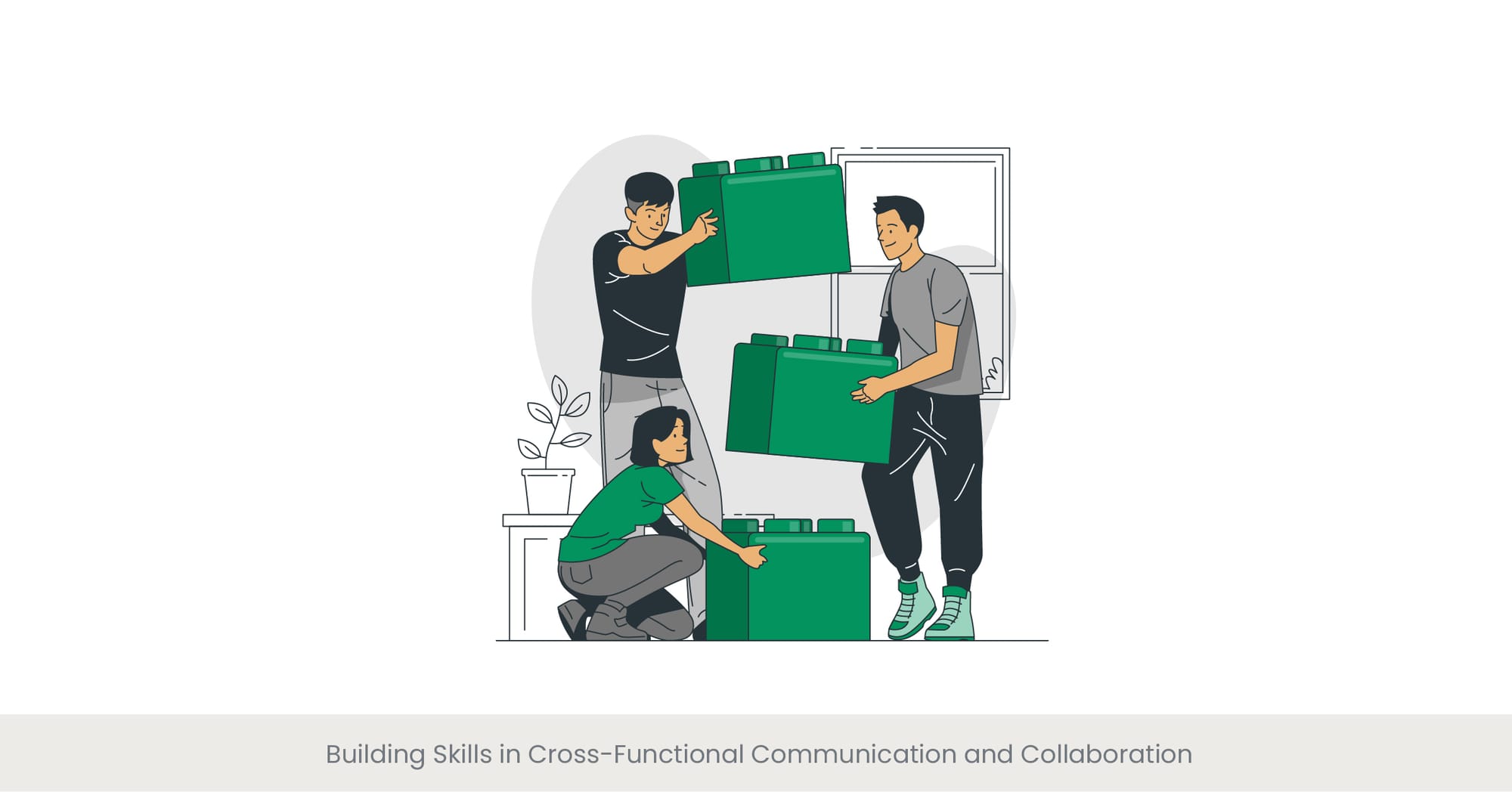
Introduction: Enhancing Interdepartmental Synergy
Cross-functional communication and collaboration are vital in today’s interconnected business environments where projects often span multiple departments various industries. Enhancing these skills through specialized workshops can help break down silos, foster innovation, and improve project outcomes by ensuring that diverse teams communicate effectively.
Background: The Importance of Cross-Functional Skills
Effective cross-functional communication requires understanding and integrating diverse perspectives and expertise. This not only aids in resolving conflicts and building consensus but also enhances the overall decision-making process. Workshops designed to improve these skills focus on techniques like active listening, clear articulation of ideas, and effective negotiation strategies tailored to diverse organizational roles.
Real-World Applications: Implementing Cross-Functional Training
A leading software development company faced challenges in aligning its software engineering, marketing, and sales teams. By implementing a series of workshops focused on cross-functional communication, the company facilitated better understanding and cooperation between these teams, which led to more coherent product development cycles and marketing strategies developed that accurately reflected the product capabilities and customer needs.
References and Validation
Research indicates that organizations with effective cross-functional teams see a 30% higher satisfaction rate in project outcomes. Furthermore, a study highlighted in corporate communication training reviews showed that employees who underwent training for cross-functional collaboration exhibited a significant improvement in their ability to work with teams from different departments, leading to increased innovation and faster problem-solving.
Fostering a Culture of Open Communication and Transparency
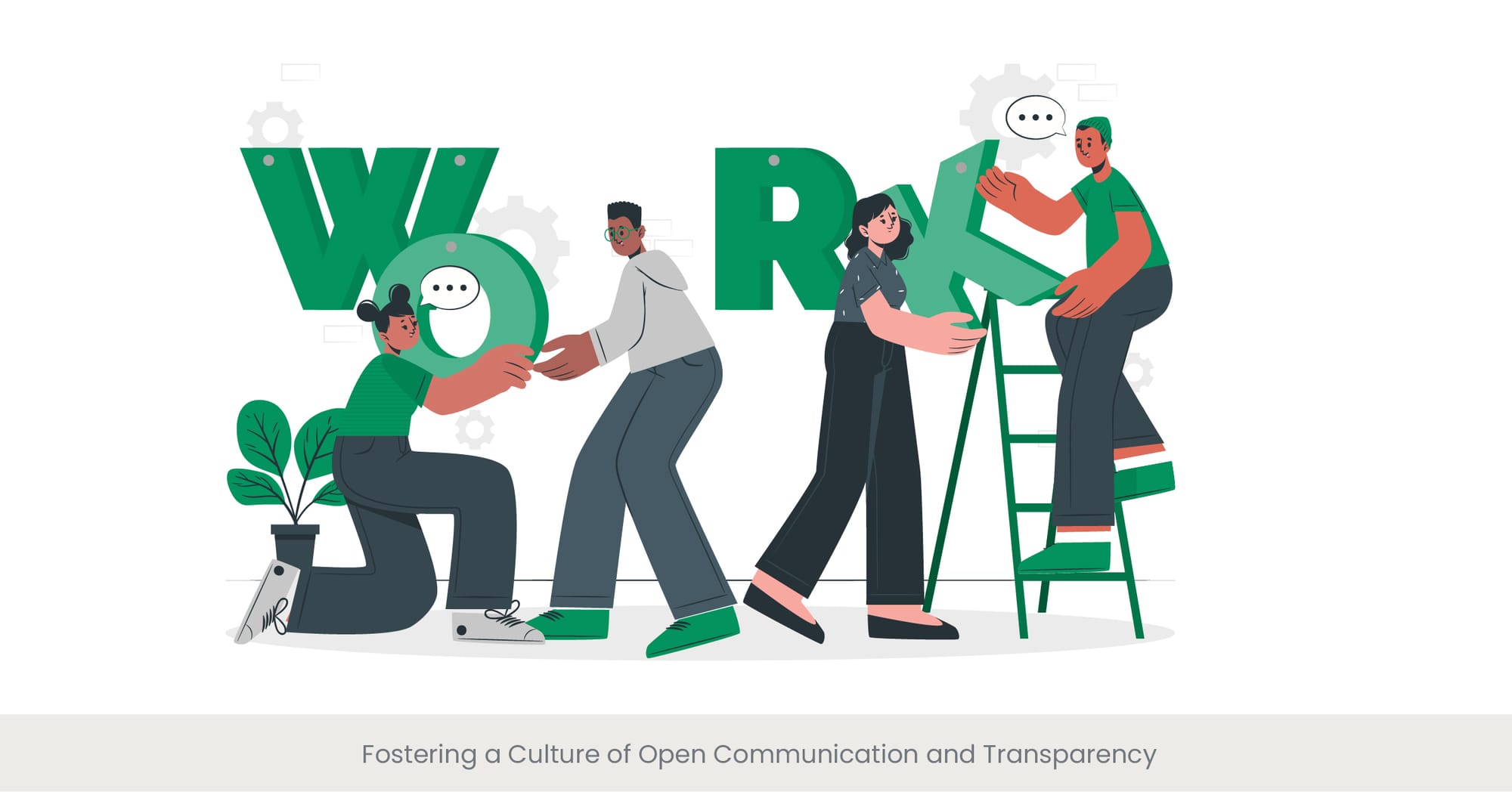
Introduction: Creating Transparent Workplace Environments
Establishing a culture of open communication and transparency is fundamental in fostering trust and accountability within organizations. Workshops that emphasize these values can help create a more inclusive and honest work environment, where employees feel valued and informed.
Background: The Significance of Open Communication
Open communication in the workplace involves the free and timely exchange of information, enabling all members to be equally informed and involved in decision-making processes. This transparency not only boosts morale but also minimizes the influence of the rumors and misinformation that can often proliferate in more closed environments.
Real-World Applications: Strategies for Enhancing Transparency
A practical example can be seen in a healthcare provider that implemented workshops designed to improve transparency in internal and internal employee communications throughout. These workshops trained leaders on how to effectively share information regarding organizational changes and policy updates. As a result, employees felt more secure and involved, leading to higher engagement levels and a reduction in turnover rates.
References and Validation
A survey by Gallup found that organizations with high levels of transparency have 30% higher retention rates. Additionally, a report on effective communication highlighted in executive presentation skills and leadership development literature notes that companies prioritizing open communication are 50% more likely to have lower employee turnover. Case studies from these workshops show significant improvements in employee trust and commitment to organizational goals.
Empowering Employees to Communicate Vision, Values, and Goals
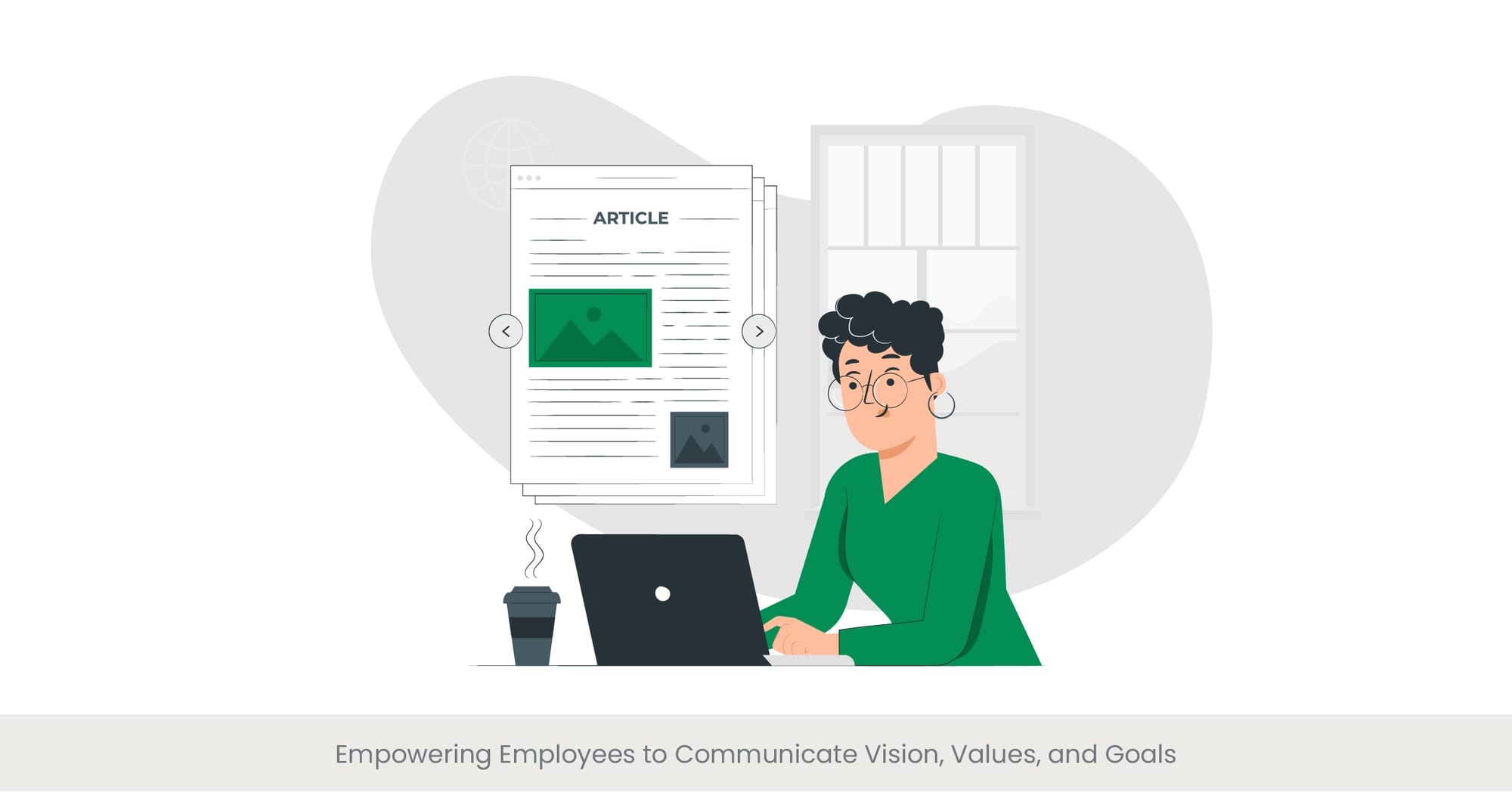
Introduction: Aligning Team Efforts with Organizational Objectives
Empowering employees to effectively communicate the organization's vision, values, and goals is crucial for ensuring that every team member is not only aware of these elements but is also actively engaged and interested in promoting and achieving them. This alignment is vital for sustaining organizational cohesion and driving collective success.
Background: The Role of Vision and Values in Communication
Articulating a clear vision and strong values helps create a shared sense of purpose and direction within the company. Employees who understand and connect with these elements are more likely to exhibit higher levels of commitment and performance. Workshops that focus on communicating these aspects effectively equip employees with the necessary skills to embody and advocate for the organization's core ideals.
Real-World Applications: Practical Training Techniques
For instance, a multinational corporation implemented a series of workshops that provided training on how to communicate corporate values in everyday interactions and decision-making processes. The sessions included role-playing exercises where employees practiced delivering the company’s vision and values through simulated stakeholder interactions, enhancing their confidence and ability to represent the company externally.
References and Validation
Studies from the Institute for Corporate Productivity have shown that companies with employees who can clearly articulate the organization's vision and values see a 40% increase in performance metrics related to goals achievement. Furthermore, feedback from training sessions dedicated to teaching professionals on this topic, such as those offered by INK PPT Communication Workshops, consistently highlights an increase in employee engagement and a stronger alignment with the organizational mission.
Measuring the Impact of Communication Workshops on Business Outcomes
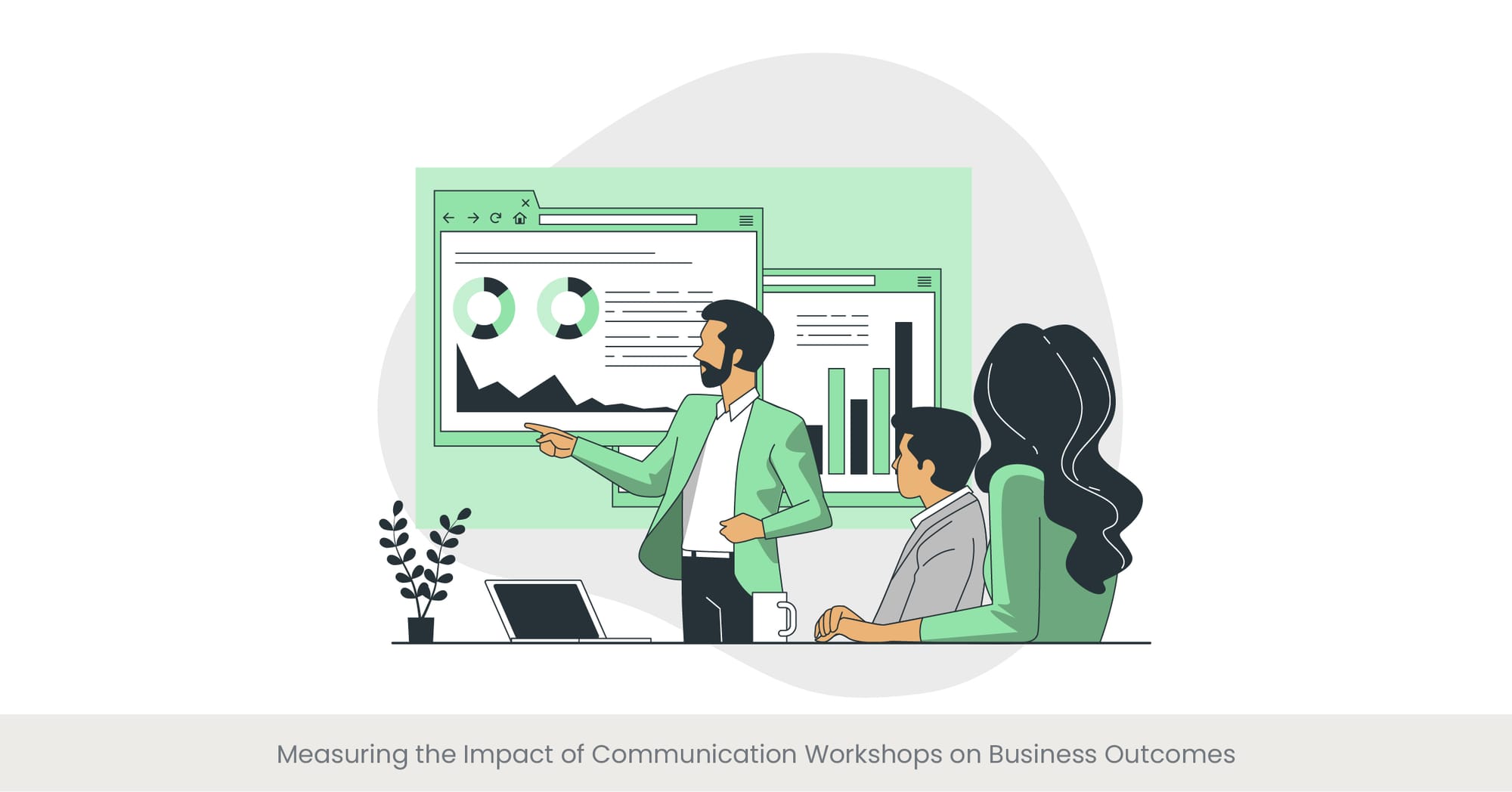
Introduction: Evaluating Training Effectiveness
Understanding the real impact of communication workshops on business outcomes is essential for validating the investment in training programs. Effective measurement not only confirms the value of these initiatives but also provides insights into how they can be improved for even greater effectiveness.
Background: Importance of Metrics in Training Evaluation
The evaluation of training effectiveness involves setting clear, measurable goals prior to the implementation of communication workshops. These might include improved employee engagement scores, higher productivity metrics, or more effective management practices. Using these metrics, organizations can track changes over time to see how the training has influenced key business outcomes.
Real-World Applications: Implementing Evaluation Strategies
A practical approach to measuring the impact includes using both qualitative feedback from participants and quantitative data from performance metrics. For example, a technology firm implemented pre- and post-training surveys coupled with performance data analysis to assess the effectiveness of their communication training program. The results showed a notable increase in project delivery efficiency and a decrease in communication-related errors.
References and Validation
Research indicates that companies that effectively measure the outcomes of their training programs see a 50% higher return on their investment compared to those that do not. For instance, corporate communication training programs that included follow-up sessions to measure learning retention and application reported significant improvements in team performance and business operations, as noted in studies published by the American Management Association.
Frequently Asked Questions
What are the 5 P's of presentation skills?
The 5 P's of presentation skills stand for Plan, Prepare, Practice, Present, and Post-Evaluate. Each step is crucial for delivering effective presentations, from initial planning and preparation to practicing, presenting, and reflecting on feedback.
How to prepare for an executive presentation?
To prepare for and deliver an executive presentation, understand your audience, clarify your key messages, design visually appealing slides, rehearse your delivery, and anticipate questions. Consider executive presentation training to hone and develop these skills further.
What are the 5 essential skills for making a successful presentation?
The five essential skills for a successful presentation include clear articulation, effective non-verbal communication, audience engagement, content organization, and confident delivery. Mastering these can be enhanced through a course of targeted advanced presentation skills training workshops.
What are C-level presentation skills?
C-level presentation skills involve clear communication, strategic content tailoring, executive presence, persuasive storytelling, and adept use of technology. These skills are crucial for influencing decision-makers and leading organizations.
What is corporate communication training?
Corporate communication training focuses on improving an either person or organization’s own knowledge and internal and external communication capabilities. It includes training in areas like public speaking, business writing, crisis communication, and media handling.
What are the 3 branches of corporate communication?
The three branches of corporate communication are internal communication (within the company), external communication (with stakeholders and the public), and crisis communication (managing information during a crisis).
How do I become a corporate communication specialist?
To become a career corporate communication specialist, earn a degree in communications, public relations, or a related career field; gain experience through internships or entry-level positions; and develop skills in writing, speaking, and strategic communication planning.
What is the basic of corporate communications?
The basics of corporate communications involve effectively managing the flow of information within and outside of the organization. It includes crafting clear messages, understanding the audience, the message and using the right media channels and tools to disseminate information.
How can communication workshops impact team collaboration?
Communication workshops can significantly impact team collaboration by improving mutual understanding, enhancing information sharing, and reducing conflicts, thereby fostering a more cooperative and productive team environment.
What metrics can be used to measure the effectiveness of communication workshops?
Metrics to measure the effectiveness of communication workshops include participant satisfaction, application of new skills learned, improvements in communication quality, increased productivity, and achievement of specific organizational goals.

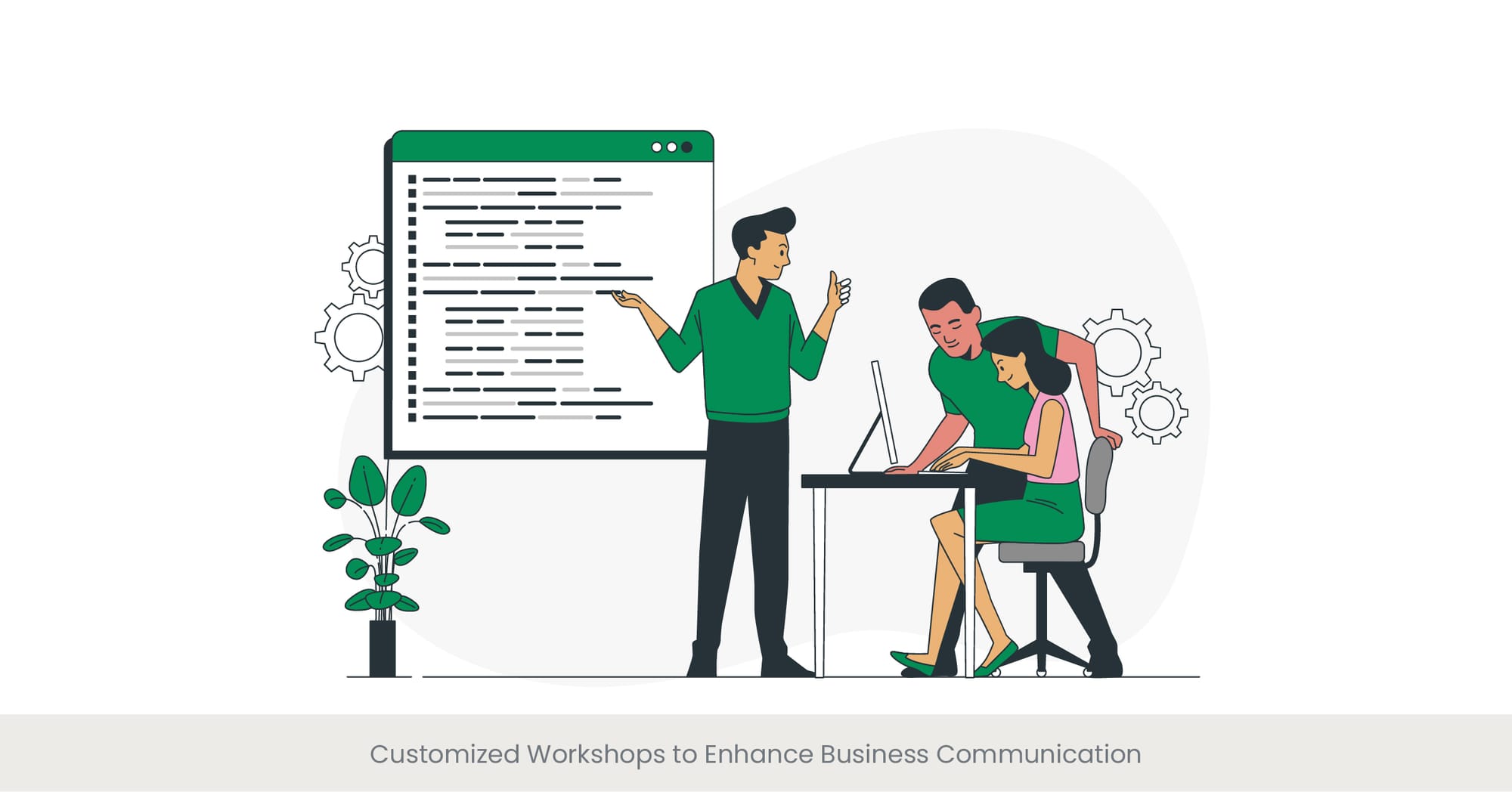

%20(1).jpg)
%20(1).jpg)
